If you’ve ever explored high-end ceramic markets or galleries, you’ve likely noticed the striking simplicity and, yes, the often-steep price tag attached to these seemingly unadorned pieces. Why is Japanese Bizen Pottery so revered, so popular, and often so expensive? This comprehensive guide will take you on a journey to the heart of Bizen, exploring its unique creation process, its distinct types, and how this ancient craft continues to captivate collectors, from tea masters to those simply seeking a piece of authentic bizen japanese pottery history.
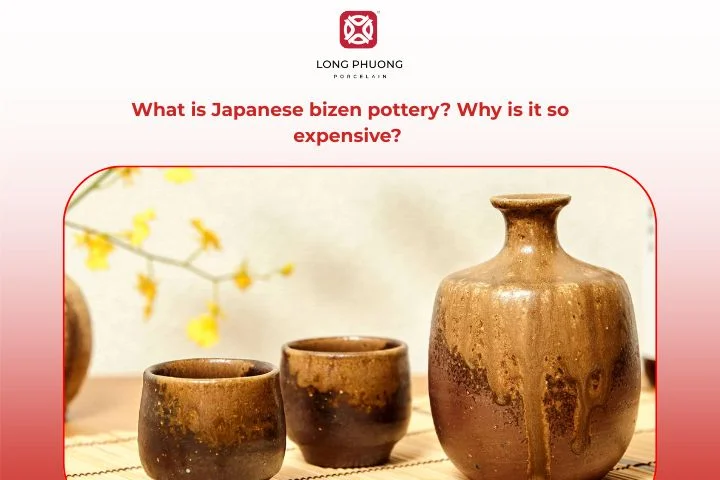
1. What is Japanese bizen pottery? Why is Bizen pottery so popular in Japan?
Japanese Bizen Pottery is one of the “Six Ancient Kilns” (Rokkoyō) of Japan, boasting a history that stretches back over a thousand years, dating back to the Heian period (794–1185). It originates from the Imbe area of Bizen province (now Okayama Prefecture).
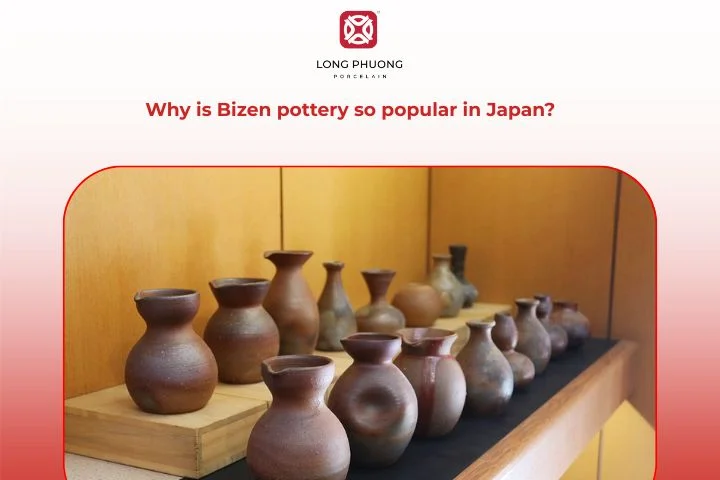
The popularity of Japanese Bizen pottery in Japan lies in its close connection with Zen philosophy and the Japanese tea ceremony. The rustic, natural look of Bizen ware reflects the Japanese aesthetic of wabi-sabi – beauty in imperfection and simplicity. Tea masters especially value Bizen tea bowls for their earthy textures and ability to enhance the flavor of tea.
Over time, Bizen pieces became prized collector’s items, passed down through generations. Today, Bizen pottery continues to symbolize Japanese cultural heritage and artistry.
See more: a complete guide to ceramics: meaning, history, and uses
2. What makes Japanese bizen pottery unique? Why is it so expensive?
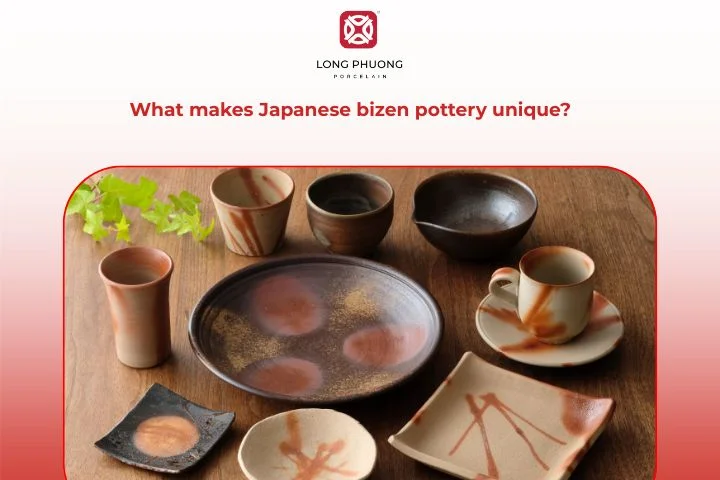
The uniqueness and high cost of bizen japanese pottery are directly tied to its demanding production process, especially the firing. Some of the key reasons Bizen pottery is so valuable include:
- Age-old tradition: It is one of Japan’s oldest surviving pottery styles.
- Natural beauty: Each piece shows unique patterns such as fire marks, ash deposits, or color gradients.
- Durability: Bizen clay is dense and strong, making the pottery long-lasting.
- Limited supply: The labor-intensive firing process and reliance on traditional kilns mean production is slow.
- Collector value: Antique Bizen pieces and works by famous artists often sell for very high prices.
The high cost also reflects its reputation in Japan’s cultural history. When you buy Japanese Bizen pottery, you are not only purchasing a vessel but also a piece of living tradition.
3. Common types of bizen pottery
The character of Bizen pottery is defined not by a potter’s brush or applied glaze, but by the “scenery” (Keshiki) created by the kiln atmosphere. Collectors identify and categorize Bizen by these unintentional but highly desired effects.
3.1 Hidasuki Bizen Pottery
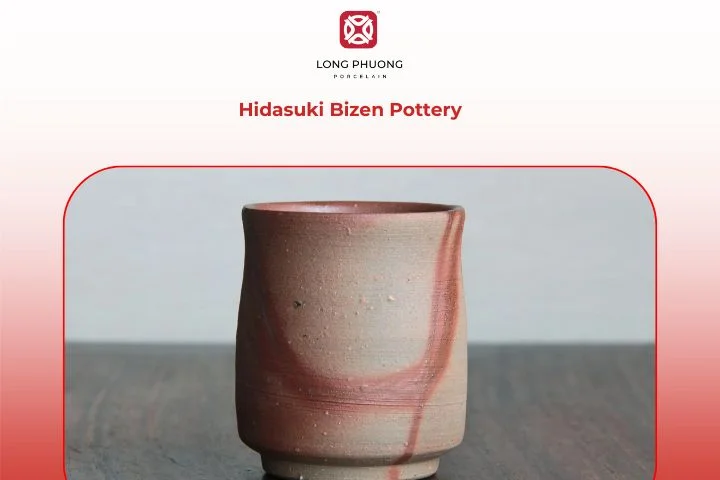
Hidasuki refers to a reddish pattern created by wrapping pieces with rice straw before firing. The straw burns away, leaving striking red lines against the clay surface. Hidasuki Bizen pottery is especially popular for tea bowls and sake cups.
3.2 Sangiri Bizen Pottery

Sangiri pieces are placed near the edge of the kiln, where oxygen levels are low. The result is a dark, smoky color with shades of black, gray, and green. Collectors admire Sangiri Bizen pottery for its dramatic, almost mysterious look.
3.3 Goma Bizen Pottery
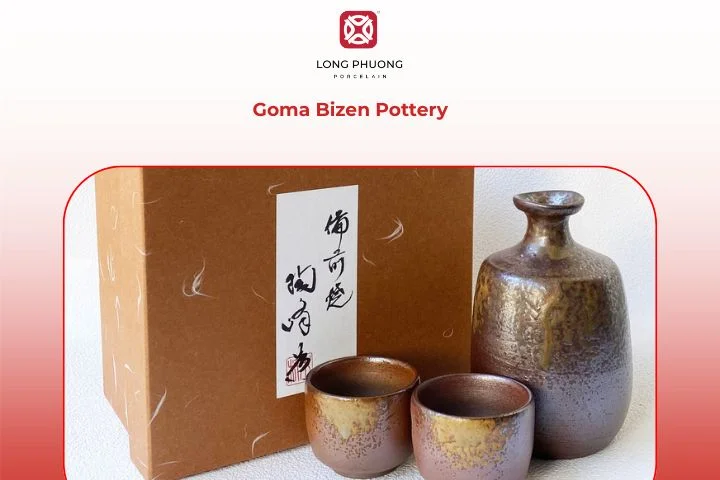
Goma means “sesame seeds” in Japanese. This style features specks of golden brown caused by melted pine ash falling onto the pottery surface during firing. Goma Bizen pottery is valued for its warm, organic patterns.
3.4 Ao-Bizen Pottery (Blue Bizen)
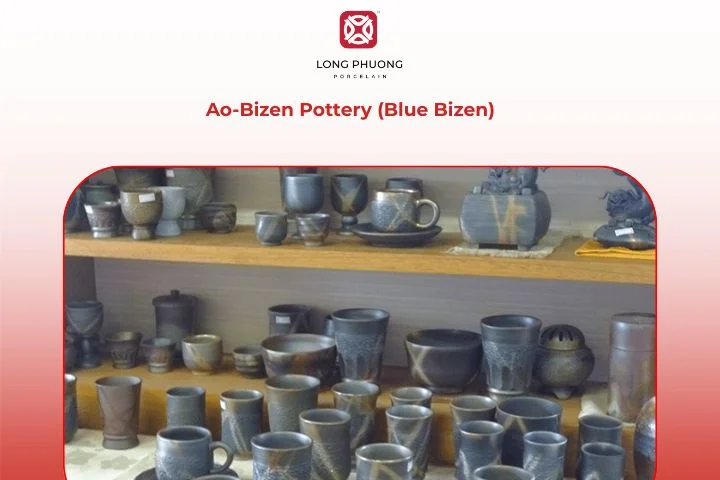
Rare and highly prized, Ao-Bizen pottery has blue and greenish tones caused by specific kiln conditions and clay reactions. The cooling process in oxygen-reduced areas creates this subtle yet enchanting coloration.
3.5 Hai-Kaburi Bizen Pottery
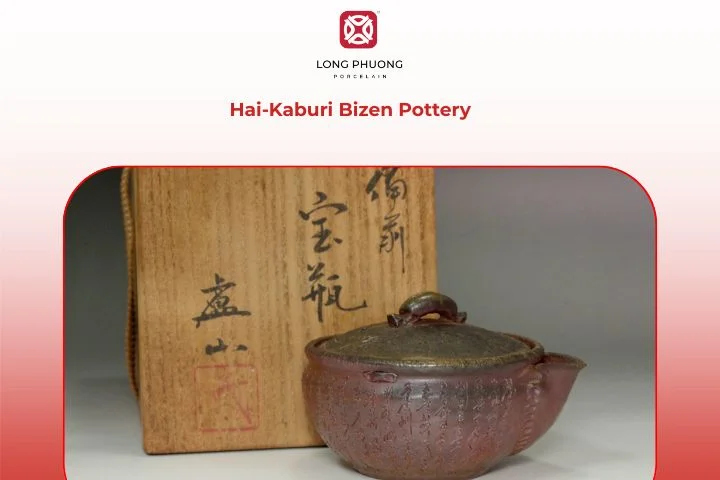
Hai-Kaburi, meaning “ash-covered,” occurs when pottery is buried in ash during firing. The heavy ash layers create rich textures and natural glaze-like surfaces. Hai-Kaburi Bizen pottery often looks dramatic, with unpredictable surface effects.
4. Video guide: Exploring Japanese bizen pottery in detail
5. Tips for using and caring for bizen pottery
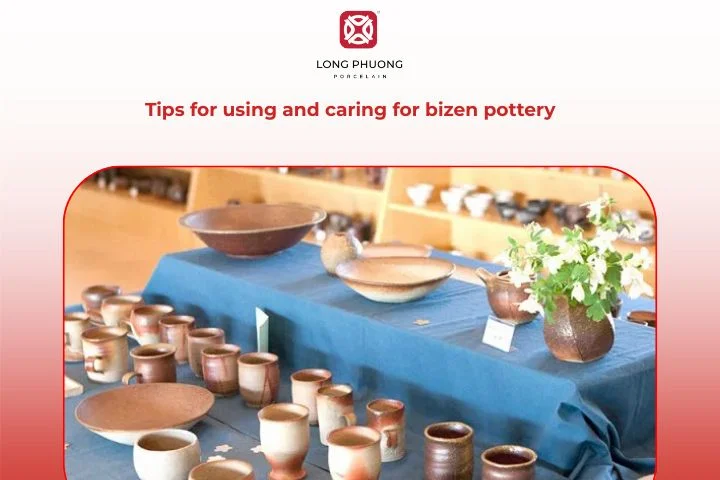
While incredibly durable, Bizen pottery benefits from specific care to maintain its unique beauty and ensure its longevity.
- Before First Use: Rinse the piece thoroughly in warm water. Bizen ware is porous, so soaking it briefly (10-15 minutes) before using it for liquids (like sake or tea) helps prevent staining and enhances the “maturing” process.
- The Maturing Process (Youhen): Bizen is famous for ‘maturing’ over time. As you use the pieces, oils from your hands, tea stains, or sake residue seep into the porous clay, subtly altering the color and texture, making the piece feel smoother and richer.
- Cleaning: Wash gently by hand with mild soap and water. Avoid using harsh scrubbers or dishwashers, as these can damage the delicate, natural patina (wabi-sabi surface) that develops with use.
- Display: To appreciate the complex kiln effects like Sangiri or Goma, display Bizen pieces where natural light can highlight their unique topography.
6. FAQs

6.1. How to identify bizen ware?
Authentic Bizen ware has no glaze. Look for natural surface effects such as fire marks, ash deposits, or straw patterns. Japanese pottery marks Bizen artisans use can also confirm authenticity.
6.2. Where is Bizen Pottery made?
Bizen pottery is exclusively made in and around the town of Imbe, located in the Bizen area of Okayama Prefecture, Japan. The name “Bizen” itself is a geographical designation tied to this specific region and its unique clay.
6.3. What does Bizen mean in Japanese?
“Bizen” (備前) is the name of the historical province in Japan where the pottery originated. The term Bizen−yaki (備前焼) simply means “pottery from Bizen.” It doesn’t have a direct translation as an adjective or noun, but signifies a profound link to a specific place and its century-old ceramic tradition.
7. Conclusions
Japanese Bizen Pottery is more than just tableware; it is a tangible piece of Japan’s artistic soul. Its popularity and enduring value are testament to the raw beauty achieved when a master potter collaborates intimately with the volatile forces of nature—the earth and the fire.
From the random, beautiful drips of Goma to the intense, scarred beauty of a Sangiri finish, each piece of bizen japanese pottery is a unique, unrepeatable dialogue between tradition and chance.
While Bizen celebrates the unglazed, raw aesthetic, Long Phuong Porcelain offers a different kind of perfection: ceramics that meet the high-use demands of modern life, featuring impeccable glazing for hygiene, chip resistance, and a sophisticated presentation.
If you appreciate the durability born of high-firing, but seek the clean, functional elegance necessary for contemporary dining and daily life, we invite you to explore the extensive collection at Long Phuong Porcelain. Experience the difference that premium materials and expert craftsmanship—refined for the 21st century—can make in your home.
Long Phuong Group Joint Stock Company
- Phone number: (+84) 989 595 866
- Email: export@longphuong.vn
- Factory: Hap Linh Industrial Cluster, Hap Linh, Bac Ninh, Vietnam
- Showroom Ha Noi: 59 Cua Bac, Ba Dinh Ward, Hanoi, Vietnam
- Showroom Ha Noi: 37 Cua Nam, Cua Nam Ward, Hanoi, Vietnam
- Showroom TP. Ho Chi Minh: 127 Le Thi Rieng, Ben Thanh Ward, Ho Chi Minh, Vietnam
Related Posts
CEO of Long Phuong Group Joint Stock Company, with more than 20 years of exploration and research to obtain the best formulas and professional experience, Long Phuong Porcelain has produced more than 400 designs of all kinds of household porcelain, Significant contributions to Vietnam's ceramic industry.
 Vietnam
Vietnam
